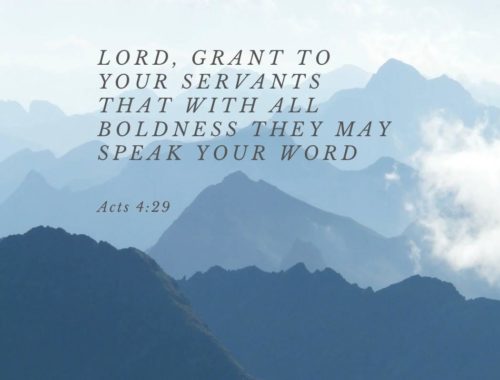Acts Chapter 15 – The Sacred and the Secular

The development of the apostolic church is founded on a profound re-understanding of the sacred and the secular. This re-understanding was marked by major conceptual u-turns, emotional struggles, and vehement debates that were difficult for many to reconcile. It was particularly manifested by two issues in debate: 1) Jesus is the Christ and 2) the gospel is also for the non-Jews.
The first conceptual u-turn that the Jews had to come to terms with was that God had made the secular sacred. In chapter 7, Stephen was stoned to death because the Jews could not accept that Jesus, a common man of no social standing, is the Holy One. For those Jews that believed Jesus is the Holy One, they continued to grapple with their understanding of the sacred and the secular into the subsequent chapters.
Should we preach the gospel to the non-Jews (who are considered secular, if not profane)? If the non-Jews receive the Holy Spirit, should we give them water baptism? Can we eat at the same table with the non-Jews? Against what the Jews had been taught for generations, the answer to these questions was a resounding “yes” according to Peter’s vision in Acts 11.
Yet the sacred was also made secular. When queries pertaining to the conversion of non-Jews had been resolved, Jewish Christians ran into further complications when pastoring a culturally diverse congregation (Acts 9,10, 11 and 14).
In Chapter 15, no small dissension and debate arose amongst them. If the non-Jews accept the same faith as we do, should we circumcise them like us? Since Abraham’s time, circumcision had been a covenantal sign between God and the chosen. Those without it were considered not just secular but a profanity. God nearly killed Moses because his sons were uncircumcised (Exodus 4:24-26).
Yet contrary to the Jew’s ingrained understanding of the necessity of circumcision, the answer this time round was a “no”. The spiritual significance of circumcision had expired. From a religious practice, which had to do with obtaining eternal life, circumcision became a cultural practice that merely signified the ethnic identity of the Jews. What was considered sacred and mandatory had become secular and optional.
Today the struggle to demarcate between the sacred and the secular continues into our everyday life. When we decide to become Christians there are certain things we do, and other things we don’t do or stop doing. For instance, we abandon the practices of our previous faith and abstain from engaging in activities relating to other religions.
Now here comes the tricky, or the complicated, part. While certain everyday life practices to us are clearly religious and others cultural, there are practices that are not so clear cut. It all depends on where you are in time (history) and space (context).
For instance, in terms of time, a practice may originate from a religious context. However, it may have lost its religious association along the way in history and has become a cultural practice for the present majority. In terms of space or context, whether an everyday life practice is considered religious or cultural may also depend on one’s proximity to a culture.
This issue is particularly salient in a multi-ethnic and multi-cultural congregation. As a cultural insider, I may be doing something that I think is cultural. But what I do may be read as carrying religious connotations by a cultural outsider. The same applies to the other way round. All these complexities require us to be highly nuanced in thinking through the question of the sacred and the secular. These two concepts are certainly not binary. They exist on a continuum and are intertwined.
To navigate our way forward, I invite you to consider the following with me:
- Think relationally. When thinking through what is cultural or religious, compare and contrast across cultures, across times, and across contexts. Ask why I think and feel in a certain way about a certain everyday life practice?
For instance, do I think and feel the same way about Christmas gifts and Ang Baos? Why yes? Why not? How do I arrive at a certain judgement about the practice of giving and receiving such items? How do I decide what response is appropriate when I am offered one? Where do I stand in relation to that practice? How do others stand in relation to that same practice? Be reflexive.
- Think creatively. Instead of asking what I cannot do, ask what I can do.
To give an example, a mother once shared what she did during Halloween. She organized a concert party at home and invited those children who did not go out for trick-or-treating. Next day at school, when the children’s classmates showed off their candies from trick-or-treating, her children talked about the concert party and the fun they had at home. Be inventive. - Think empathically. An action begins with the intention of a doer and ends with the interpretation of an observer. Bear in mind, there is always a distance, whether big or small, between the intention and the interpretation of an action.
While knowing the intention of the doer allows us to more accurately interpret the action, intention is not always obvious. That is why a single action may lead to multiple interpretations. In order not to become a stumbling block to others, our judgement call needs to come in. There will be times we need to adjust our action, and other times to make explicit our intention if needed. Be wise.

